Freemasonry, with its deep roots in universal principles such as individual freedoms, education, and the pursuit of science, stands as a beacon of unity in a world divided by conflicting ideologies.
By embracing the tenets of Freemasonry, including respect, peace, and mutual understanding, we can navigate societal challenges and foster a more harmonious world.
Contained within the Constitution of the Grand Lodge of Alberta: Ancient, Free, and Accepted Masons are seven “Charges of a Freemason” of which Article 23, Appendix B, VI.2. of ”Behaviour After the Lodge is Over and the Brethren Not Gone” [1], states this:
You may enjoy yourself with innocent mirth treating one another according to ability, but avoiding excess, or forcing any Brother to eat or drink beyond his inclination, or hinder him from going when the occasion calls him or doing or saying anything offensive, or that may forbid an easy and free conversation, for that would blast our harmony and defeat our laudable purpose.
Therefore, no private piques or quarrels must be bought within the door of the Lodge, far less any quarrels about religion or nations, or state policy, we being only as Masons of the universal religion above mentioned; we are also of all nations, tongues, kindreds and languages, and are resolved against all politics, as what never yet conduces to the welfare of the Lodge, nor ever will.
With multiculturalism as national policy [2], there will always be conflicting ideas from divergent ideologies, with varying attitudes towards merit and ability, and opposing ideas on race equality and affirmative action.
There are also those who wish to re-write history to fit their own narrative, and change people’s perception of what is fact and what is real. Such conflicting and divergent ideas will inevitably and eventually result in pain and sorrow for many.
We, as Freemasons, must endeavor to model calm by not being drawn into taking sides on these divergent views.
However, Freemasonry is largely based on the Regius Manuscript of 1390 [3] that sets out the basic tenets of Freemasonry, the King James version of the Holy Bible of 1611 [4], the original VSL or HB, and previous versions of the Bible. From these, the roots of Freemasonry include the following:
1. Judaeo-Christian philosophy;
2. Individual freedoms, or civil liberties;
3. The Ten Commandments;
4. Property rights;
5. Education and the scientific process; and
6. Private enterprise.
We can examine each one of these in turn:
Judaeo-Christian Philosophy
Judaism [5], which dates from the 6th century BCE, has, as its core text, the Torah, the first five books of the Tanakh, a collection of ancient Hebrew scriptures. The Tanakh, known more commonly as the “Hebrew Bible”, is also referred to as the Old Testament of the Holy Bible in Christianity.
Christianity [6] stems from the life, teachings, and death of Jesus of Nazareth in the First Century CE, which are contained in the New Testament of the Holy Bible.
There are numerous references or examples of Judaeo-Christian philosophy in our Masonic rituals and ceremonies. For example, in the Entered Apprentice Degree (EA) we open the Holy Bible or Volume of the Sacred Law (VSL) to Ruth IV: 7, which is indicative of a contract made in Israel in those days.
This passage reminds us of the contract that we as EAs have just made with our Lodge. In fact, each of the degrees in Freemasonry are contracts between the candidate and his Lodge.
In particular, the EA pledge has all five of the elements of a legal contract:
1. Mutual agreement
2. Capacity of parties
3. Legal consideration
4. Lawful object
5. Genuine intention
Further, we find in Judges XII: 6 the word Shibboleth, and it means [7]: any custom or tradition, usually a choice of phrasing or even a single word, that distinguishes one group of people from another.
And it is frequently used as an indicator that one belongs to a group or culture.
Individual Freedoms or Civil Liberties
The largest Masonic symbol in a Freemasons’ Lodge is the presence of two great pillars. Jointly, these two pillars represent those that led the children of Israel out of Egypt by day and by night, as explained in Exodus.
The two great pillars are referenced in Exodus 13:21 and 1 Kings 7:15-21 and symbolize the desire of an individual, and society as a whole, to be free, and represent the responsibilities that go with that freedom.
This freedom is clearly referenced in the Fellow Craft Degree (FC). The responsibilities that go with freedom are to feed, clothe, house, and educate those who wish to be free. These responsibilities were no longer those of the Pharaoh.
In Canada, individual freedoms or civil liberties are largely defined by the Charter of Rights and Freedoms [8].
The Charter includes freedoms of religion (or not), thought, and speech; freedom of the press and media; the right to vote to maintain the democratic process; mobility rights; the rule of law that includes due process and the requirement to prove guilt; protection against cruel and unusual punishment; equality rights; and language rights.
The Ten Commandments
While the Ten Commandments are not actually contained in our rituals, they are fundamental to Canadian society.
The sixth through ninth Commandments (Exodus 20: 13–16) are specific to laws of Canada; and each Master of a Lodge promises to abide by these Commandments in preparation for his being Installed, by responding in the affirmative to these Ancient Charges to the Master-elect, as follows:
· You agree to be a peaceful subject, and cheerfully to conform to all laws of the country in which you reside.
· You promise not to be concerned in plots or conspiracies against government, but patiently to submit to the decisions of the supreme legislature.
· You agree to pay proper respect to the civil magistrate, to work diligently, live creditably, and act honourably by all men.
The sixth to ninth Commandments from the Holy Bible, (Exodus 20: 13–16) are:
6: Thou shalt not kill.
7: Thou shalt not commit adultery.
8: Thou shalt not steal.
9: Thou shalt not bear false witness against thy neighbour.
Property Rights
Property rights are not specifically referenced in our Masonic rituals, but they are directly or obliquely referenced in the VSL:
· Deuteronomy 19: 14 Thou shalt not remove thy neighbour’s landmark, which they of old time have set in thine inheritance, which thou shalt inherit in the land that the Lord thy God giveth thee to posses it.
· Deuteronomy 27: 17 Cursed be he that removeth his neighbour’s landmark. And all the people shall say, Amen.
Further references can be found in Proverbs 22: 28, and Proverbs 23: 10, as well as in many other locations.
The Alberta Bill of Rights [9], protects the right of every property owner to the enjoyment of their property, and the right to due process of law when being deprived of that right.
Education, and Scientific Method or Process
In Fellowcraft degree the candidate is instructed [10] that as a Craftsman he is to make the liberal arts and sciences his future study. In addition, many Freemasons were supporters of the Age of Enlightenment and members of the Royal Society, the world’s oldest independent scientific academy.
The process of learning the alphabet and its sounds so as to be able to read and write is the basis of education. When combined with elementary numeracy, it is the path to knowledge that paves to the way to learning about the arts and humanities, and the hard sciences.
We learn about arts and humanities so that we can communicate more effectively; we learn about the hard sciences so that we can improve our lives and the world around us. The scientific method [11] or process, when appropriately applied, permits us to establish truth, and facts that are necessary for humanity to improve the world to make it a more habitable place in which to live, work, and grow.
And as we grow in knowledge, as we are instructed to do as Freemasons, we become more useful and valuable to the society in which we live.
Private Enterprise
The kingdoms of King David and King Solomon were founded upon peace and international trade, which led to prosperity. Essentially, they controlled the north-south trade routes from Egypt and Elate to Damascus, as well as access to the Mediterranean Sea ports such as Joppa (Jaffa), Acco (Acre), and, indirectly, Tyre.
Camel trade caravans used these trade routes or roads to convey such goods as frankincense from Sheba, (Yemen), and spices from India via Elate and Al Aqaba, as well as overland from Petra.
These camel-trade caravans were all private enterprises.
The four basic components of private enterprise [12] are freedom of choice, individual property rights, profit motive, and owner control.
The first, freedom of choice, is contained in Canada in the individual rights and freedoms guaranteed by the Charter, while property rights and the right of an owner to enjoy that property—owner control—are contained in Alberta’s Bill of Rights.
Profit motive is the driving force that has permitted societies to rise up out of the quagmire of mundane existence, and shed the cycle of poverty and destitution.
With Canada’s continuing national policy of multiculturalism, and with various conflicting cultures that may present tumultuous disagreements associated with the imposition of divergent views both nationally and world-wide, we, as Freemasons, must keep our roots in mind and act according to those original purposes, tenets, and principles laid out in the original documents of Freemasonry: the Regius Manuscript and the Holy Bible, We must do this so that we do not lose our way.
Footnotes
References
References:
1. Constitution, Grand Lodge of Alberta, Ancient Free & Accepted Masons, 2011, Article 23, Appendix “B”, The Charges of a Freemason: VI. 2. and VII.
2. https://en.wikipedia.org/wiki/Multiculturalism_in_Canada#:~:text=Multiculturalism%20in%20Canada%20was%20officially,the%20social%20importance%20of%20immigration. Multiculturalism is reflected with the law through the Canadian Multiculturalism Act of 1988 and section 27 of the Canadian Charter of Rights and Freedoms and is administered by the Department of Canadian Heritage.
3. The Regius Manuscript, Fredrick M. Hunter, Research Lodge of Oregon No, 198, A.F.& A.M. Middle English Translation by Mr. John J. Church University of Oregon, 1952.
4. Holy Bible, Authorized King James Version, Oxford Reference Bible, Masonic Edition M2691y
5. https://en.wikipedia.org/wiki/Judaism
6. https://en.wikipedia.org/wiki/Christianity
7. https://en.wikipedia.org/wiki/Shibboleth
9. https://kings-printer.alberta.ca/documents/Acts/A14.pdf
10. The Work, Canadian Rite, Grand Lodge of Alberta Ancient Free and Accepted Masons.
Article by: Chris E. Batty
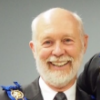
Chris E. Batty was born in the spring of 1945 in Tunbridge Wells, Kent, UK.
He immigrated to Canada early in 1965 with just $45 in his pocket and very little education.
Chris’s interest in Freemasonry stems from his father, who was a member of Bostall Heath Lodge No. 4492, English Constitution.
He has been a Freemason since 1975, served as Worshipful Master of Saskatchewan Lodge No. 92 GRA for the Masonic Year 1982; appointed the Grand Pursivant for the Masonic Year 2001 – 2002; elected as the District Deputy Grand Master for the Northern Lights District for the year 2005 – 2006.
Elected to the Masonic Higher Education Bursary Committee in 2006 and served as the Chairman from 2007 to 2014.
Elected Junior Grand Warden in 2012, and served as SGW, DGM, and the Grand Master for the year 2015 – 2016.
He was appointed as an Honorary Past Grand Master of the Grand Lodge of Saskatchewan in 2015.
And subsequently, an Honorary Grand Master of the Grand Lodge of Manitoba in 2017.
Recent Articles: of current interest
 Keeping Passions and Prejudices within Due Bounds Master your emotions and find balance in a chaotic world with Darren Allatt's "Keeping Passions and Prejudices within Due Bounds." Discover practical strategies for self-awareness, emotional intelligence, and building meaningful relationships. Transform your life with calmness, clarity, and purpose. Start your journey towards emotional mastery today. |
 Masonry in the Age of Leisure - P2 Explore the optimistic future of Masonry in "Masonry in the Age of Leisure" by VVenBro Scott Wisdahl. Delve into the possibilities of a leisure-driven society where technology enhances social bonds, decentralizes the Craft, and reshapes Masonic traditions. Discover how Masonry can thrive in an interconnected, tech-savvy world. |
 Masonry in the Age of Leisure - P1 Embrace the future of Masonry in the Age of Leisure! Imagine an era where technology empowers deeper connections, offering a tapestry of diverse groups united by Freemasonry’s timeless values. Envision hybrid meetings transcending borders, fostering brotherhood across continents. This optimistic future cultivates intellectual growth and social interaction, heralding a Masonic renaissance for all. |
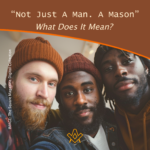 “Not Just A Man. A Mason”: What Does It Mean? Embrace the profound essence of Freemasonry, not merely a group but a journey of integrity, shaping men of dignity. By adopting virtues such as honesty, justice, and brotherly love, Freemasonry transcends time, urging us towards a dignified life. It’s more than being a man; it’s about living with unyielding dignity. |
 Multiculturism and the Culture of Freemasonry Freemasonry, with its deep roots in universal principles such as individual freedoms, education, and the pursuit of science, stands as a beacon of unity in a world divided by conflicting ideologies. By embracing the tenets of Freemasonry, including respect, peace, and mutual understanding, we can navigate societal challenges and foster a more harmonious world. |
 Embrace the new paradigm of eco-conscious living in the 21st century. Freemasonry, a cornerstone of society, must evolve, placing Nature at its heart. Reject anthropocentrism, embrace deep ecology, and champion sustainable living and global cooperation. Let Freemasonry lead by example, advocating for a world where humans and nature coexist harmoniously. |
 How Freemasonry Has Woven Itself into the Fabric of Society Like the weathered stones of an ancient temple, Freemasonry's origins are shrouded in mystery. This fraternal order has woven invisible threads throughout society's fabric since emerging in the 1600s. Despite declining membership, Freemasonry's influential legacy endures, seen in philanthropy, architecture, and the ideals of legendary members. Though facing challenges, revival remains possible if it adapts traditions to the modern era. |
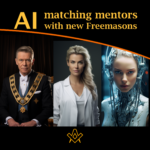 AI help in matching mentors with new Freemasons Harnessing AI for Freemasonry Mentorship: A Comparative Analysis. Freemasonry, an age-old fraternity, seeks to enhance its mentorship program by leveraging AI. While the Grand Master suggests detailed member profiles for matching, a Professional Coach emphasizes personality compatibility. Meanwhile, an AI Bot proposes machine learning for pattern recognition. Dive in to explore the potential and pitfalls of each approach. |
 Masonic Charities P.2 – The Shriners Discover the Shriners' legacy within Freemasonry; delve into their profound commitment to philanthropy and see how Masonic Charities demonstrate brotherly love, relief, and truth. Become inspired by the bonds that unite Shriners around the globe and their impactful work in local communities. |
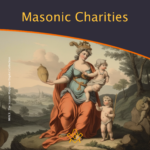 Freemasonry's commitment to charity has always been a priority and remains a core principle, reflecting its mission to promote brotherly love, relief, and truth in the world. Part 1 of the series gives an introduction to the establishment of the main Masonic Charitable endeavours in the 18th and 19th centuries and several key influencers. |
 Solomon Learning and Development Platform The Intersection of Freemasonry and Technology: Embracing the Digital Age with the New |
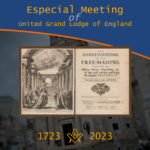 Especial Meeting of United Grand Lodge of England The year 2023 marks the tercentenary of the publication in London of the Constitutions of the Freemasons, based on Enlightenment principles that provide the philosophical foundations of modern Freemasonry. Why are the 1723 Constitutions important? Many Masonic histories have been concerned with ‘when’ and ‘what’. We also explore ‘why?’ |
 Like every other incident of initiation it is in the light of the larger meanings of Freemasonry that we must interpret the Rite of Destitution. But what does it mean? |
 Society of Grand Lodges in Alliance (SOGLIA) is a confederation of Grand Freemason Obediences in which all members obey the principles of Regularity. Assembled annually, in different places of the world, in order to share fellowship and to promote Masonic tradition, SOGLIA members are respecting the autonomy of each Grand Lodge. |
 Confederation of the Grand Lodges of Europe and the Mediterranean - Universal Freemasonry and its intellectual property are less and less taken into account in the current times of constant movement and unclear future prospects. |
 The Book of Law in Brazilian Freemasonry We are informed that, Freemasonry it is not a religion, but the candidate has a belief in a creative principle, which later, we call the Great Architect of the Universe. - by Fernando Rodrigues de Souza |
 Mike's Masonic Walks And Talks WBro. Mike Neville is a Masonic author and lecturer. He offers walks and talks primarily around London, based on his vast knowledge of the area and his specialist subjects, which cover all aspects of Masonic history. |
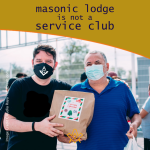 A Masonic lodge is not a service club An address delivered to the 10th Annual Conference of Western Canadian Grand Lodges (1950) in response to the question, "Should Our Western Grand Lodges Sponsor a Specific Program?" By |
 The Order of Bees was established as a youth initiative for the boys and girls of Prince Hall Freemasons, and symbolises the relationship existing between the activities of the youth and the family of bees. |
 The Confederación Masónica Interamericana (CMI) was founded in 1947, is a non-profit organization that groups together 92 Great Masonic Powers, admitted as members and distributed in 26 countries in South, Central, North, Caribbean and Europe. |
 This smartphone app is designed to work with all Freemasons from both Regular and Independent Grand Lodges around the world. |
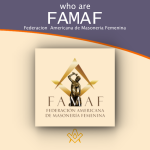 The American Federation of Feminine Freemasonry (FAMAF) is an organization that brings together Grand Lodges, Grand Orients and Confederations of Feminine Masonic Grand Lodges from the American continent. |
 The third largest Masonic Alliance of independent grand lodges, which currently has over 500,000 members in the world and an incredible resource of "good people with a good reputation" from around the world. |
 A Guiding Paw - my faithful 'brethren' A heart-warming story of one Mason's best friends – and how Gary's faithful guide dogs have helped fulfil both his Masonic life but also his valuable work in public service. |
 A visit to the Mother Lodge of Scotland Let me take you to the heart of Scotland to meet our Brethren of the Mother Lodge of Scotland, a journey into one of Freemasonry's deepest roots. Our guide Carlos Oliveira Santos who is from |
 An introduction to VEREINIGTE GROSSLOGEN von Deutschland / UNITED GRAND LODGES of Germany |
 International Masonic Union CATENA An international association of Grand Lodges and independent Lodges, with all true Masonic traditions, which adhere to the basic principles of the equal standing of men and women in Freemasonry |
 Social Impact of Prince Hall Freemasonry in D.C., 1825-1900. Alonza Tehuti Evans discusses Prince Hall Freemasonry, founded by African Americans. |
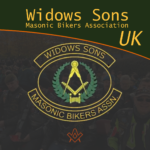 Who are the Widows Sons, and what do they do, and how can you join ? |
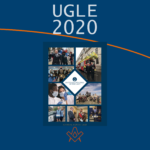 For the first time in its 300 year history UGLE has published an Annual Review |
 Founded in 1919 and named after the Grand Master of the Knights Templar, this International Order has helped young boys become great men. |
 9th International Conference of Freemasonry Hidden Meanings: Esotericism and Masonic Connections |
 An introduction to CLIPSAS and we look at who are they and what do they do |
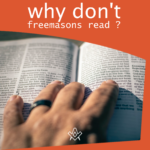 The title of this article will seem somewhat of an oxymoron, because at this precise moment you, most likely a Freemason, is reading this |
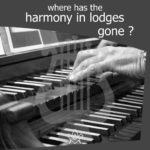 Music can make you either remember everything or forget everything! They even call it the 'rhythm' of life because life does have a beat, a rhythm, a song! Music is equally important for Freemasons. |
 Young Masons' Inter-Club Virtual Social An initiative was created to initially keep Brethren engaged in their Masonry whilst the restrictions of the COVID-19 pandemic are in place. |
 I've heard people say that we don't have heroes |
 What can we learn from Steve Jobs' address given at Stanford in 2005 |
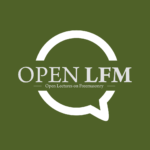 Open Lectures on Freemasonry as a series of monthly online lectures that aims to increase the visibility and accessibility of research into Freemasonry. The lectures are open to anyone who is interested. |
 What Kind of Library Do You Have? Many Brothers have no clue as to what kind of "Craft" library they actually have in their home or office. Most of these Brothers don’t care that they don't know – so, what kind of library do you have? |
 Russian Freemasonry a combination of a short sketch of its history and a review of the present-day Masonic landscape in this country |
 A brief outline showing the differences and similarities within Freemasonry |
masonic knowledge
to be a better citizen of the world
share the square with two brothers

click image to open email app on mobile device






